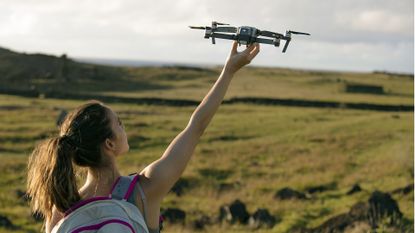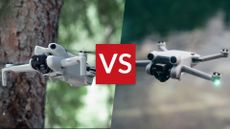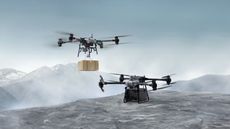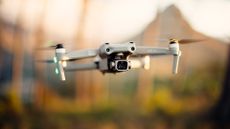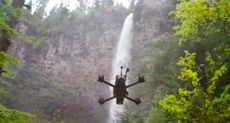Drones (or UAVs, as they are no longer called) come in many shapes and sizes and at wildly varying price points. You can buy a small indoor flyer for pocket money prices, or drop several thousand on a heavyweight camera-carrying cinematic monster.
Choosing the right drone for your needs can be confusing. We have several guides designed to help you out. Our general best camera drone guide covers everything, and is currently topped by the incredible DJI Air 2S. Our best beginner drone guide contains easy-to-use drones for new fliers (topped by the DJI Mini 2, although the Autel Evo Nano is better if you can afford it) while our best cheap drone guide is for those who are on a tighter budget (winner: the Ryze Tello). Finally, if you're looking for something cheap and accessible for children to get started with, you want our best kids drone guide (topped by the Potensic A20W Mini Drone).
If you're brand new to the world of drones, however, you might want a bit more info before you start shopping. That's where this guide comes in. It's here to walk through the different types of drone You should also consult our UK drone regulations and US drone rules guides so you're clear on what you need to do, from a legal standpoint, before kicking off your new hobby.
Indoor vs outdoor drones
There are essentially two main categories of drone: those that are fitted with GPS (global positioning using satellites) and those without. Most cheap indoor drones don’t have GPS built in so were you to fly them outdoors, chances are they’d just drift with the breeze and not hold their position at all. Even indoors, these drones are notoriously difficult to fly because they require constant input on the sticks. In fact they’re almost as unwieldy as the average model helicopter and therefore tend to crash a lot. For that reason, always try and spend a little more on an indoor drone equipped with indoor positioning sensors. These drones will literally hover in one spot with all fingers off the controls. They are a much better option for anyone wishing to learn how to fly a drone and they’re generally better value in the long term because they’re less likely to crash.
Outdoor drones, on the other hand, often use GPS to locate their position in the sky and will even hover in one spot if you take your hands off the controls. These GPS-equipped models are far and away the easiest form of model aircraft to fly – and the most reliable – but it is essential that you read the manual before take off, acquaint yourself with all controls and practice at low altitude and at low speed before reaching for the sky.
Toy drones
Many first-time buyers opt for a toy UAV so they can get a handle on the control system in readiness for one of the bigger boys. Bear in mind that most sub-£75 craft do not come with onboard altitude stability sensors, let alone GPS positioning. The smallest thumb-sized toy drones may look very appealing but don’t expect them to hover in one spot with your fingers off the sticks; these things require constant adjustment of the sticks and plenty of patience to keep them airborne.
Things improve immeasurably once you reach the £100 mark. At this price level you can expect a drone equipped with ultrasound sensors that keep the craft in a (more or less) rock steady hover with no input required from you. Parrot leads the way in this respect with one or two indoor drones that are both easy to fly and excellent to learn on.
If you just want to whizz about the local park or heathland, try something cheapish like the huge number of budget-priced Chinese GPS-equipped copters currently flooding the market. These are cheap enough not to cause too much of a fuss if crashed but their onboard cameras – if they have one – are woefully low on the resolution front making them near useless for cinematography purposes.
Consumer camera drones
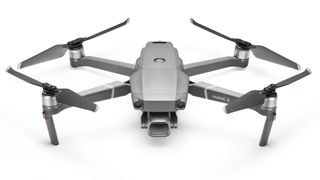
Photography and video are the two main reasons why drones have, pardon the pun, soared to such stratospheric popularity. When, in July 2014, DJI released the GPS-equipped Phantom 2 Vision+ with built in HD camera and three-way gimbal (the clever bit that keeps the camera rock steady no matter what the drone is doing), the world rushed at the opportunity to shoot the sort of aerial video previously only accessible to those sitting in a helicopter seat.
Some consumer platforms still use a GoPro camera mounted to a three-axis stabilising gimbal. The GoPro’s size, light weight and ability to shoot high stills as well as HD and 4K video makes it ideal for consumer-level videography and stills photography. If you already own one of the ubiquitous action cams, buying a compatible flyer could be one way of keeping your costs down. However, these types of drones are now few and far between.
These days, however, the vast majority of aerial video fans opt for models with built-in 4K cameras that seamlessly stream all flight parameters and stable visual feeds to a humble tablet or smartphone. DJI leads the way in this respect with a roster of extremely reliable, easy-to-use camera drones that won’t completely break the bank. The Chinese company currently occupies 70% of both the consumer and commercial drone markets. Its technology in this field is second to none which is why we’d generally recommend a DJI product over any other brand.
Autonomous drones
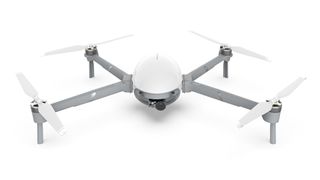
Few would have guessed that, within just seven years of DJI launching its first Phantom drone, we’d be savouring the thrill of having an autonomous robot camera flying alongside us, filming our outdoor pursuits from perspectives never previously imagined. Whether you’re mountain biking, surfing, skiing, jogging or simply chilling on the beach, there are a growing number of flying cameras out there that will happily tag along.
The vast majority of autonomous models (including the entire DJI roster) require nothing more than a few taps of a screen. Preset flight parameters usually include ‘follow me’, where the drone literally tracks the user from either behind or just to the side, and ‘orbit’, which commands the craft to fly in a circle with the camera pointing at the user below; a very difficult manoeuvre using joy sticks alone.
Some small pocket-sized autonomous ‘selfie’ drones still exist but most of them have fallen by the wayside due to the fact that their cameras are, to put it mildly, horrendous. Most selfie drones are especially terrible at filming video because their tiny cameras aren’t equipped with a gimbal that prevents jitter as the drone pitches and rolls around in the air. However, they’re not too bad for taking low-altitude aerial snaps of your beach holiday or a family barbecue.
Racing drones

If you're a speed freak and want to enjoy the thrill of flying but have no desire to shoot video and stills from the air, consider a racing drone.
These small, stumpy four-bladed quadcopters are purpose-built for high speed manoeuvres and are often custom-assembled by their owners. However, there there are many ready-to-fly (RTF) models available, too.
Racing drones lack GPS but are equipped with a camera. However, this isn’t for getting atmospheric arial footage of your sister’s wedding. Instead, they are there so you can see where you're going while viewing the terrain through an FPV (First Person View) headset – essentially, a repurposed pair of VR goggles – that receives live footage from the nose of the craft. FPV flying takes a lot of practice but, once mastered, it’s a hugely exciting pursuit, full of adrenaline-pumping action.
As a beginner, your best bet is to join a local racing club where you can fly safely in a professionally monitored environment, usually a disused factory or plot of land filled with various obstacles.
Drone flying safety rules

So you don't get yourself into a pickle in a public place, here are some basic rules you need to follow – and follow them well:
Do not fly anywhere near airports or airfields
This is common sense that needs no explanation. Just don’t do it.
Stay below the legal maximum of 400ft (120m)
Commercial and private aircraft are required to fly above 400ft unless landing or taking off. However, emergency service helicopters will often fly lower so always keep an eye and an ear on your surroundings.
Stay 150ft (50m) away from people and property
A wayward drone can seriously hurt someone if it hits them in the face so always be extra cautious when flying in public areas.
Never lose sight of your drone
Flying beyond line of sight is illegal even though some drones can fly up to 5km away.
Never fly near aircraft
If you see or hear a low-flying light aircraft or helicopter in the vicinity, it’s your duty to immediately lower your drone’s altitude even if you’re below the legal 400ft threshold. It’s impossible to judge height and distance when out in the open so always err on the side of caution and bring the drone either to a low altitude of a few metres or land it.
You can read the full guidelines, and register as a drone operator, at register-drones.caa.co.uk.
